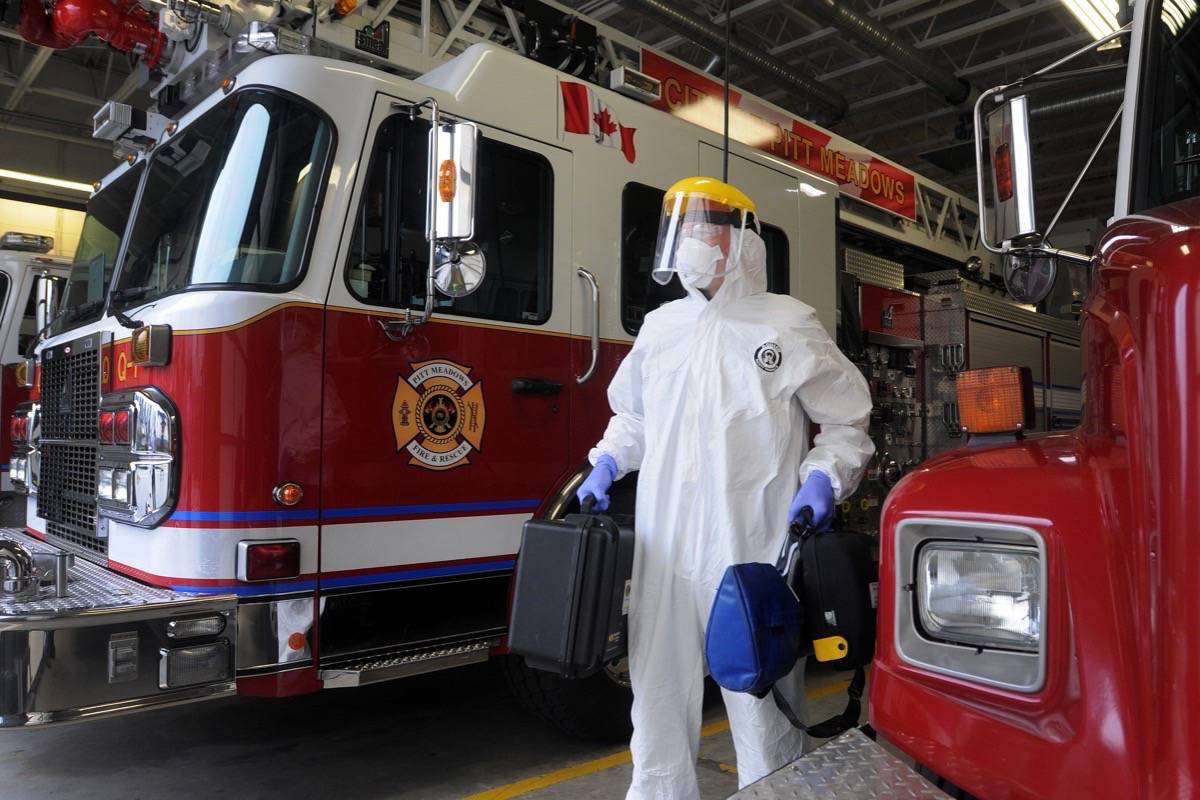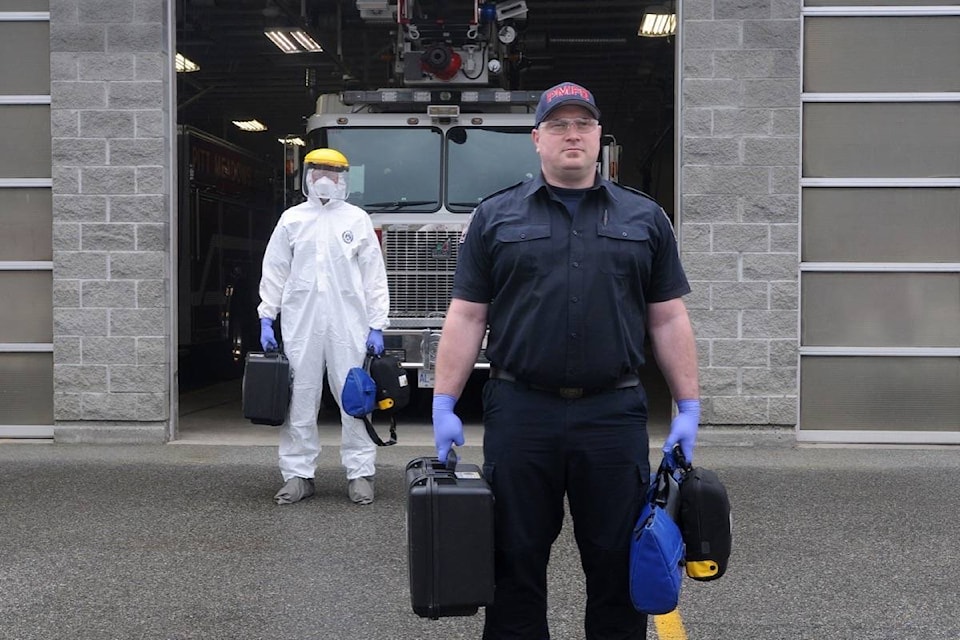In the face of the COVID-19 crisis first responders have had to adapt quickly and make substantial changes to the way they respond to emergencies of all kinds.
In order to protect themselves, their patients and the public in general, they now dress differently and distance themselves from those needing help – and each other – as they deal with possible cases of the virus.
“We haven’t changed our response to calls, we are still going to all calls, but the way we respond to them is significantly different,” said deputy fire chief David Biggin with the Pitt Meadows Fire Department.
For every medical call, even before the threat of COVID-19, firefighters at the department have donned level one personal protective equipment, which includes an N95 mask, glasses and gloves.
READ MORE: Social media a blessing and a curse during time of crisis
However, now with the possibility of patients carrying COVID-19, they no longer send two or three members into a room or building with a person requiring medical help.
Only one member of the team will assess the patient, at a safe distance.
“Normally we would go in and get down right beside them and get hands on,” said Biggin.
“Now we are basically doing it from a distance and providing them comfort and reassurance,” he said.
If the patient is found to be stable and in a comfortable position, and not needing immediate medical attention, then Biggin’s crews will wait for B.C. Ambulance to arrive on scene.
READ MORE: B.C. issues guidelines about distancing, reusable bags to grocery stores amid COVID-19
But, if the patient does require immediate assistance, firefighters now have to put on level two personal protective equipment which is a full body suit with boots, an N95 mask, glasses, gloves and a full face shield.
This must be worn for any call involving an unconscious patient, any call to a care home, any patient that is determined to be “at risk” for COVID-19 or have indicated symptoms of the virus or if any member of the family or occupant of the house has been determined to be in the “at risk” category as well.
Pitt Meadows Fire Rescue is staffed with two full-time employees seven days a week between 6 a.m. and 6 p.m. Beyond those times the department relies on paid-on-call firefighters to respond on the front-lines.
And, because they are such a small department, said Biggin, it is important to keep their members safe.
“We, in the fire department, what we have to protect is our ability to do something that no other emergency service can do and that is to do fire and rescue work,” said Howard Exner, fire chief with the Maple Ridge Fire Department.
“We are very cognizant of that and so we do put a lot of precautions into place so that we can maintain our ability to control fires or do rescues of all different types,” he said.
The Maple Ridge Fire Department is also using different techniques, techniques they have never used before, to determine the threat level of each call.
They haven’t altered their response numbers or allocations to medical calls, said Exner, just the way they do respond to people.
Even at motor vehicle accidents crews have to hang back to assess if patients are showing signs of COVID-19.
Both departments have closed their fire stations to all public visitors and have increased the cleaning and sanitizing of trucks and high-touch areas of the halls. And they have cancelled things like fire inspections, weekly practise sessions and education programs.
Up to 75 per cent of the calls to B.C. Ambulance Service now involve patients who are suspected COVID-19 cases or who have flu-like symptoms, said the service’s provincial president Troy Clifford.
Instead of calling 911, said Clifford, he would like to see people use the proper resources available to them like calling 811 or their family doctor.
At the same time, though, he does not want to deter people from calling for help.
“People are scared and they’re fearful right now and they are looking for information,” said Clifford.
“We want to make sure people are getting the support and guidance but not tying up for non-emergency or non-transport treatment or transport situation,” he said.
So what they are doing is filtering out those calls through their paramedic dispatchers and diverting the calls that end up in the 911 system.
But, Clifford said, they will work with people to find the best resources for them.
Paramedics have changed their assessment process when approaching calls with more diligent questioning and they look at ways to minimize any contact between them and the patient.
But, the crisis is taking its toll on paramedics, noted Clifford.
Before the start of the COVID-19 pandemic, paramedics could go a full shift without putting on their full-protective gear. Now they have to do it for three quarters of their calls.
“That’s adding to undue pressure and stress because you’re worried and you want to make sure you’ve done it properly,” said Clifford.
And the new measures has also doubled the time-frame for each call.
But the public has been overwhelmingly supportive of front-line workers, said Clifford, that it encourages them to keep doing what they are doing.
“If everybody does their part we will be able to beat this horrible virus.”
cflanagan@mapleridgenews.com
Like us on Facebook and follow us on Twitter

